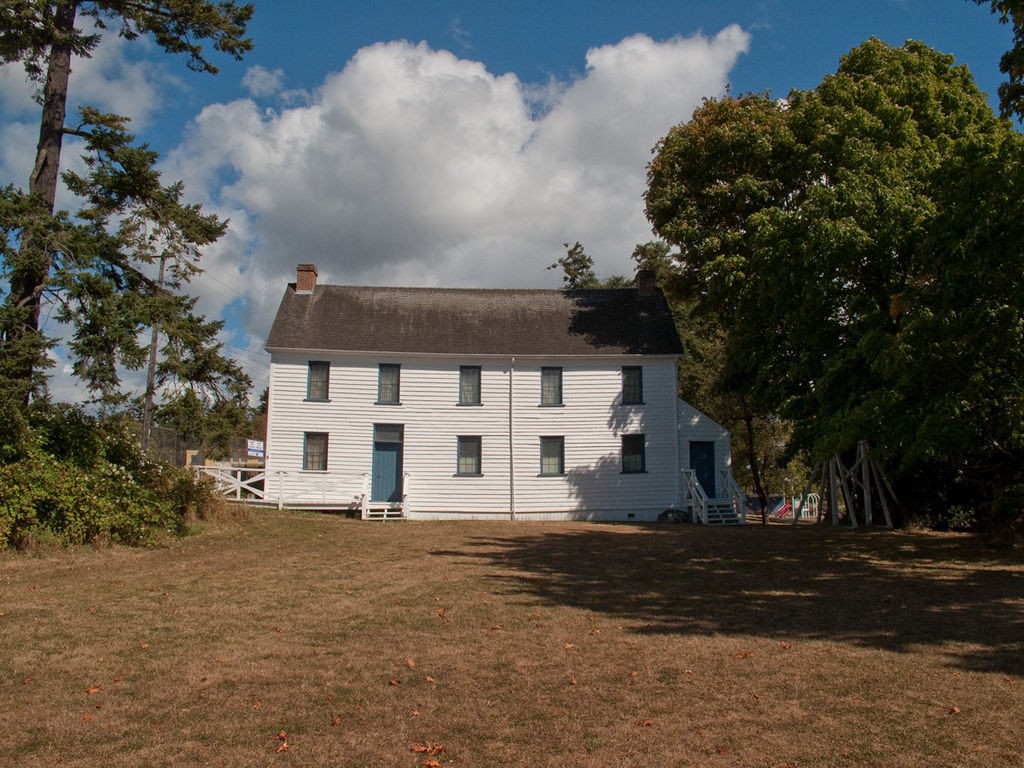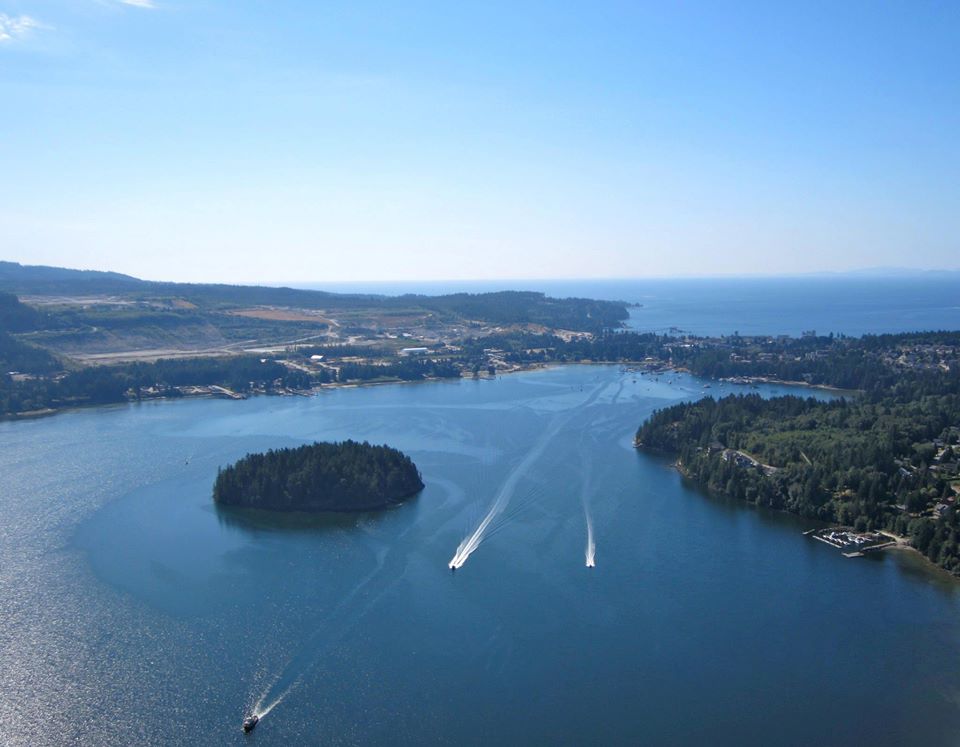Field Notes: Updates from the shíshálh Archaeological Research Project
Well, it’s been awhile. The shíshálh Archaeological Research Project (SARP) took the 2014 field season off, but will be up and running again in Sechelt in a few days. The gear is all packed and shipped, and now we just wait until we get back to the Sunshine Coast.
It’s times like these that get me feeling nostalgic. I found this t-shirt in my field gear. It’s from my very first dig: a field school with the University of Victoria, taught by Don Mitchell and Becky Wigen in 1994. The t-shirt is older than most members of my crew this summer.

We kept finding examples of an artifact called a pièce esquillée, which is a bipolar stone flake. We had trouble pronouncing the name, so we called them a pièce qu’est-ce que c’est (a piece — what is it?). That nerdy inside joke was immortalized here, on our dig t-shirts. Photo: T. Clark
We were at Kosapsom, DcRu 4, in Victoria, BC. The site was the historic Craigflower Schoolhouse, located along the Gorge Waterway. Under the schoolhouse were 4,000 years of Coast Salish culture. Up until that point, I was unsure where my career would take me. After spending a few weeks finding artifacts that hadn’t seen the light of day in thousands of years, I was hooked. Since that field school, for all but 3 of the last 21 years, I have spent each summer digging into the history of British Columbia, one trowelful at a time. Maybe some of our students will be inspired the same way this summer.

Old Craigflower Schoolhouse at Kosapsom. Photo: Bruce Pollock, WikiCommons
Over the past two decades, I have had the pleasure to work all across British Columbia, seeing some amazing sites and meeting some wonderful people. From the aptly named Horsefly Lake and Fubar Glacier, to some sketchy landings in floatplanes and helicopters, to the unrelenting blackflies of Kispiox, each new project brought something new and exciting. I can still remember seeing a Kermode bear cub (spirit bear) wandering along the side of the road near Lava Lake on the Nisga’a Highway. I can also remember spraying bear spray at a curious black bear that was a little too close for comfort near Williams Lake. The bear didn’t even sneeze — but it also didn’t eat me, so I can’t complain. I vividly recall why you need to watch where you sit in prickly-pear cactus territory near Kamloops. And I still think about the slow tugboat ride through the fog each morning to the site on Pender Island, with a crew from the Tseycum, Tsartlip and Tsawout First Nations.
My fondest memories are of the great people I have had the privilege of working with. A series of projects brought me into Qualicum territory, and I worked closely with Kwaksistala Chief Adam Dick and Chief Kim Recalma-Clutesi. They were so generous with their time, knowledge and friendship. I was also honoured to take part in the reburial ceremony of Qualicum/Pentlatch ancestors at Deep Bay.
I worked for years in the Central Interior of British Columbia as well, with the Williams Lake and Soda Creek First Nations. I learned a lot about archaeology and the land from great people like Leo Michel and Glen Dixon, not to mention top-notch archaeologists Darcy Mathews and Nicole Nicholls.
Without a doubt, though, the Sechelt project has been my favourite. The project has it all: great people, a great location and great archaeology. The Sunshine Coast feels like home.

Sechelt Inlet from a floatplane. Photo: N. Leclerc.
The project was started in 2009 by Gary Coupland of the University of Toronto, and I joined the project as director in 2011. With tremendous support from the shíshálh Nation, Chief and Council, the Education, and Rights and Title departments and the Tems Swiya Museum, SARP has flourished. Growing every year, we have added a training program for shíshálh youth, which we ran in 2012 and 2013, and we are happy to do again this year. We also held shíshálh Archaeology Day, where we showed our findings to the community and encouraged our students to take the lead in explaining their culture to their community. We will hold our third shíshálh Archaeology Day this July, and I hope it’s bigger and better than ever. I am very excited to be going back, and I hope you’ll follow our progress on the SARP blog.
This year, our blog will be run by University of Toronto students, so you can expect a lot of updates as we work on two different archaeological sites in shíshálh territory. In our next post, Natasha Leclerc will introduce our team and talk about where we are digging this year.